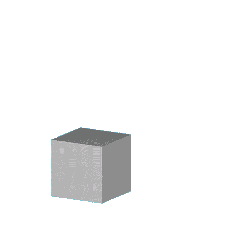Since the cat is out of the bag, maybe we could talk about Puzzle 3 a little, with an eye to constructive aspects. I’m not well-trained in constructive mathematics, so there’s a good chance I’ll learn something here.
I would guess that if you can prove “constructively” (whatever you take that to mean) that a compact metric space has a countable dense subset , then the coast is clear. Assume, as we may, that the metric is valued in . The trick is first to use that sequence to embed in the Hilbert cube , by
(By the way, this says that the Hilbert cube also enjoys a ‘versal’ property: any compact metric space embeds into it.)
Now, Cantor space maps onto (Puzzle 1) by sending a sequence of ’s and ’s to . Call this map (partly in honor of Lebesgue: this map is closely related to the Cantor-Lebesgue function). Then there is a continuous surjection of onto the Hilbert cube, via a series of maps
By taking a pullback in , the category of topological spaces,
we get a continuous surjection of a subspace of onto .
Now all we need is a continuous surjection , since then is the desired surjection. But I claim the inclusion has a retraction , constructively. Simply identify with the subspace of numbers in which, written in base , have only ’s and ’s. Then the average of any two does not belong to (consider the first place where the base expansion of differ; then the average will have a in that place). It follows that for any , there is a unique such that
and provides the desired retraction .


Re: Topology Puzzles
Please forgive me for asking, but what is the point of posing these puzzles? The answers are indeed widely known, and easily googled.